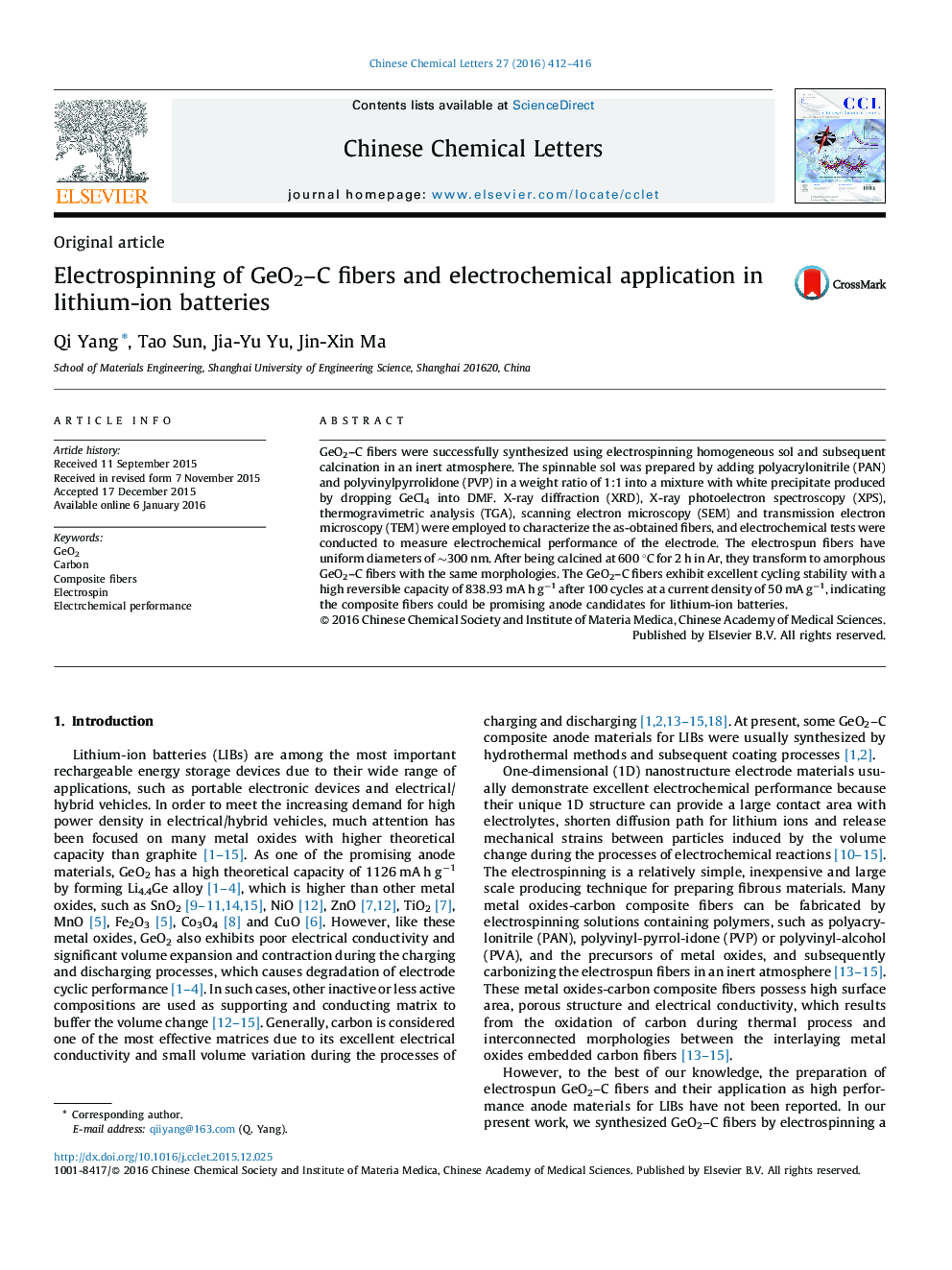| Article ID | Journal | Published Year | Pages | File Type |
|---|---|---|---|---|
| 1254479 | Chinese Chemical Letters | 2016 | 5 Pages |
GeO2–C fibers were successfully synthesized using electrospinning homogeneous sol and subsequent calcination in an inert atmosphere. The spinnable sol was prepared by adding polyacrylonitrile (PAN) and polyvinylpyrrolidone (PVP) in a weight ratio of 1:1 into a mixture with white precipitate produced by dropping GeCl4 into DMF. X-ray diffraction (XRD), X-ray photoelectron spectroscopy (XPS), thermogravimetric analysis (TGA), scanning electron microscopy (SEM) and transmission electron microscopy (TEM) were employed to characterize the as-obtained fibers, and electrochemical tests were conducted to measure electrochemical performance of the electrode. The electrospun fibers have uniform diameters of ∼300 nm. After being calcined at 600 °C for 2 h in Ar, they transform to amorphous GeO2–C fibers with the same morphologies. The GeO2–C fibers exhibit excellent cycling stability with a high reversible capacity of 838.93 mA h g−1 after 100 cycles at a current density of 50 mA g−1, indicating the composite fibers could be promising anode candidates for lithium-ion batteries.
Graphical abstractThe electrospun GeO2–C composite fibers with diameters of ∼300 nm and amorphous structures exhibit high specific capacity and excellent cyclic performance, which make them promising anode candidates for lithium-ion batteries.Figure optionsDownload full-size imageDownload as PowerPoint slide
